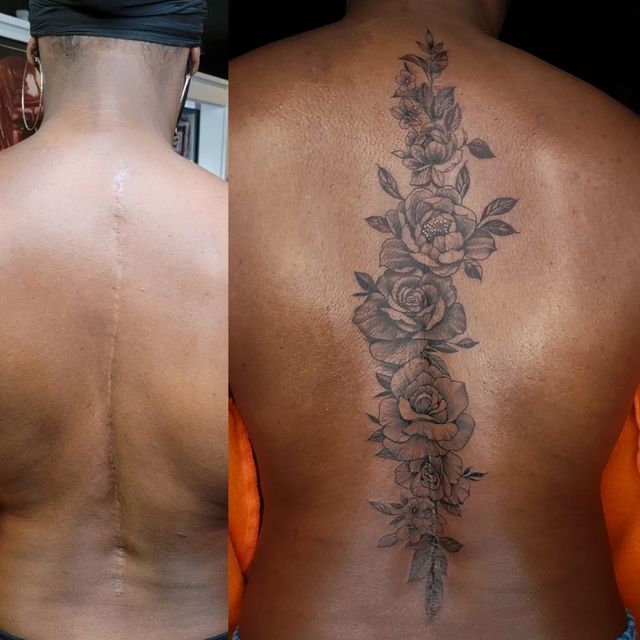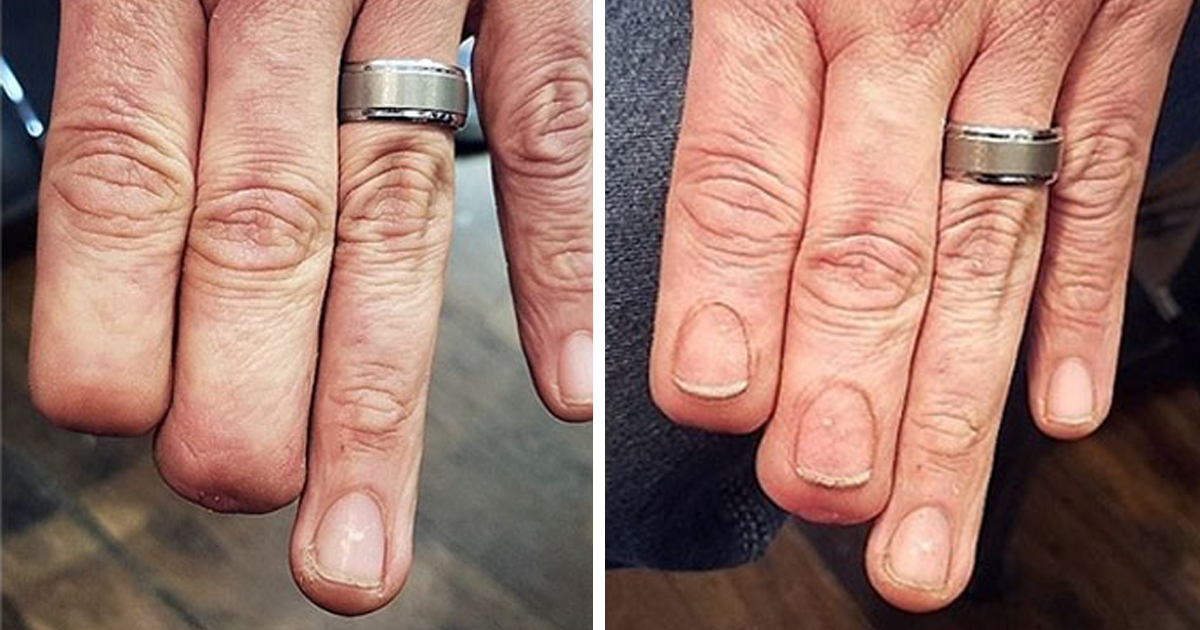The journey towards gender affirmation and self-expression is a deeply personal one, and for many transgender and non-binary individuals, top surgery is a significant milestone. However, for those with tattoos on their chests or upper bodies, the decision to undergo top surgery can be complex, raising questions about the fate of their ink and the potential for its preservation.
In this comprehensive guide, we delve into the intricate relationship between top surgery and tattoos, offering a detailed analysis of the considerations, techniques, and outcomes to empower individuals with the knowledge they need to make informed decisions about their bodies and their art.
Understanding Top Surgery and Its Impact on Tattoos

Top surgery, a transformative procedure for transgender and non-binary individuals, involves the removal, reshaping, and reconstruction of breast tissue to achieve a more masculine chest contour. The surgery can be a liberating experience, allowing individuals to align their physical appearance with their gender identity. However, for those with tattoos in the surgical area, the procedure presents a unique challenge.
The impact of top surgery on tattoos depends on several factors, including the location, size, and depth of the tattoo, as well as the specific surgical technique employed. In some cases, tattoos may be preserved or altered, while in others, they may be partially or fully removed. Understanding these potential outcomes is crucial for individuals considering top surgery, as it allows them to make decisions that honor both their bodily autonomy and their artistic expression.
The Surgical Techniques and Their Effects on Ink
There are primarily two surgical techniques used in top surgery: keyhole and double incision. Each approach has its advantages and potential impacts on tattoos.
- Keyhole Technique: This method involves making small incisions around the areola, allowing the surgeon to access and reshape the breast tissue. While this technique minimizes scarring, it can be more challenging to preserve tattoos, as the incisions are often made within the tattooed area. However, with careful planning and experienced surgeons, it is possible to preserve certain elements of the tattoo.
- Double Incision Technique: As the name suggests, this approach requires two incisions: one along the inframammary fold (the natural crease beneath the breast) and another around the areola. This technique allows for more extensive tissue manipulation and often results in a more masculine chest contour. Tattoos located below the inframammary fold are typically preserved, while those above may be partially or fully removed, depending on the design and placement.
It's important to note that the surgeon's skill and experience play a crucial role in tattoo preservation. An experienced surgeon will work with patients to understand their desires and incorporate tattoo preservation into the surgical plan whenever possible.
Preserving Tattoos During Top Surgery
For individuals attached to their tattoos, the prospect of losing them during top surgery can be a significant concern. However, with careful planning and the right surgical approach, it is often possible to preserve tattoos or incorporate them into the new chest contour.
During the initial consultation, patients should openly discuss their tattoo(s) with their surgeon. The surgeon will assess the tattoo's location, size, and design to determine the most suitable surgical technique and incision placement. In some cases, minor adjustments to the tattoo's design or placement may be recommended to facilitate preservation.
For example, if a tattoo is located on the breast tissue that will be removed, the surgeon may suggest moving the tattoo's focal point to a more permanent area, such as the inframammary fold. This ensures that the tattoo remains intact and visible post-surgery.
Additionally, surgeons may use advanced techniques to minimize tattoo distortion. These techniques include careful incision placement, precise tissue manipulation, and the use of advanced surgical tools and techniques to preserve skin integrity.
The Art of Tattoo Preservation: Real-Life Examples and Success Stories

The field of top surgery and tattoo preservation is evolving, with surgeons and patients sharing their experiences and successes. Here are a few real-life examples of individuals who underwent top surgery while preserving their tattoos.
Example 1: Preserving a Chest Piece
John, a transgender man, had a large chest piece tattoo that held significant personal meaning. He was determined to preserve his tattoo during top surgery. After consulting with his surgeon, they decided to use the double incision technique, ensuring that the tattoo, located below the inframammary fold, would remain intact.
The surgery was a success, and John was thrilled to see that his tattoo was not only preserved but also enhanced by the new chest contour. The surgical scars blended seamlessly with the tattoo, creating a unique and powerful statement of his gender identity and artistic expression.
Example 2: Integrating Tattoos into the Surgical Plan
Sarah, a non-binary individual, had several small tattoos on their chest, including a delicate flower design on one breast. They wanted to maintain these tattoos during top surgery while achieving a flat chest contour.
Working closely with their surgeon, Sarah decided to undergo the keyhole technique. The surgeon carefully planned the incisions, ensuring they avoided the flower tattoo. The surgery resulted in a flat chest with minimal scarring, and Sarah's tattoos remained intact, adding a touch of individuality to their new chest.
Example 3: Reconstructing and Enhancing Tattoos
Michael, a transgender man, had a large tribal tattoo that spanned his chest and upper back. During his top surgery consultation, he expressed his desire to enhance and preserve this tattoo. The surgeon suggested a double incision technique, focusing on preserving the tattoo’s central design elements.
Post-surgery, Michael's tattoo was not only preserved but also enhanced. The new chest contour created a more defined and masculine silhouette, accentuating the tribal design. The surgical scars blended seamlessly with the tattoo, creating a unique and powerful piece of body art.
Performance Analysis: Surgical Outcomes and Tattoo Preservation
The success of tattoo preservation during top surgery depends on several factors, including the patient’s unique anatomy, the tattoo’s characteristics, and the surgeon’s skill and experience. Here, we analyze the performance of different surgical techniques and their impact on tattoo preservation.
| Surgical Technique | Tattoo Preservation | Scarring |
|---|---|---|
| Keyhole Technique | Varies; may require tattoo adjustment | Minimal; focused on areola area |
| Double Incision Technique | Preserves tattoos below inframammary fold | Visible scars along inframammary fold and areola |

The keyhole technique offers minimal scarring but may require adjustments to the tattoo's design or placement to ensure preservation. On the other hand, the double incision technique provides a more comprehensive tattoo preservation option for tattoos located below the inframammary fold. However, it results in visible scars along the inframammary fold and areola.
Future Implications: The Evolving Landscape of Top Surgery and Tattoos
The relationship between top surgery and tattoos is a dynamic and evolving field, influenced by advancements in surgical techniques, patient preferences, and societal attitudes toward body modification and gender affirmation.
Advancements in Surgical Techniques
Surgeons are continually refining their techniques to improve outcomes and meet the unique needs of their patients. This includes developing new incision patterns, tissue manipulation methods, and scar management strategies to minimize the impact on tattoos and enhance overall aesthetic results.
Patient-Centered Care and Individualized Approaches
The transgender and non-binary community is diverse, and their experiences and desires regarding top surgery and tattoos vary greatly. Surgeons are increasingly adopting patient-centered approaches, recognizing the importance of individuality and self-expression. This shift allows patients to actively participate in their surgical journey, ensuring their tattoos and personal stories are respected and preserved.
Societal Attitudes and Body Positivity
As society becomes more accepting and understanding of gender diversity, the role of tattoos in self-expression and body positivity is gaining recognition. This shift in attitude encourages surgeons to embrace and celebrate their patients’ tattoos, viewing them as integral parts of their identities rather than obstacles to be removed.
Frequently Asked Questions

Can all tattoos be preserved during top surgery?
+While every effort is made to preserve tattoos, the success depends on their location, size, and design. Tattoos located within the surgical area may be altered or removed. However, with careful planning and experienced surgeons, many tattoos can be preserved or enhanced.
How can I prepare for top surgery if I have tattoos?
+It’s essential to discuss your tattoos with your surgeon during the consultation. Provide detailed information about their location, size, and significance. The surgeon will assess your case and recommend the most suitable surgical technique to preserve your tattoos.
Are there any risks to preserving tattoos during top surgery?
+Preserving tattoos during top surgery carries minimal risks when performed by experienced surgeons. However, there may be slight alterations to the tattoo’s appearance due to tissue manipulation. It’s important to discuss these potential outcomes with your surgeon to set realistic expectations.
Can I get new tattoos after top surgery?
+Yes, you can get new tattoos after top surgery. However, it’s important to wait until your incisions have fully healed and your surgeon has cleared you for tattooing. This typically takes several months. Discuss your plans with your surgeon to ensure proper healing and minimize potential complications.
The journey of top surgery and tattoo preservation is a unique and personal one, offering a powerful blend of self-expression and gender affirmation. By understanding the surgical techniques, potential outcomes, and real-life success stories, individuals can make informed decisions that honor their bodies and their art. As the field continues to evolve, we can expect further advancements and a deeper celebration of individuality and body positivity.